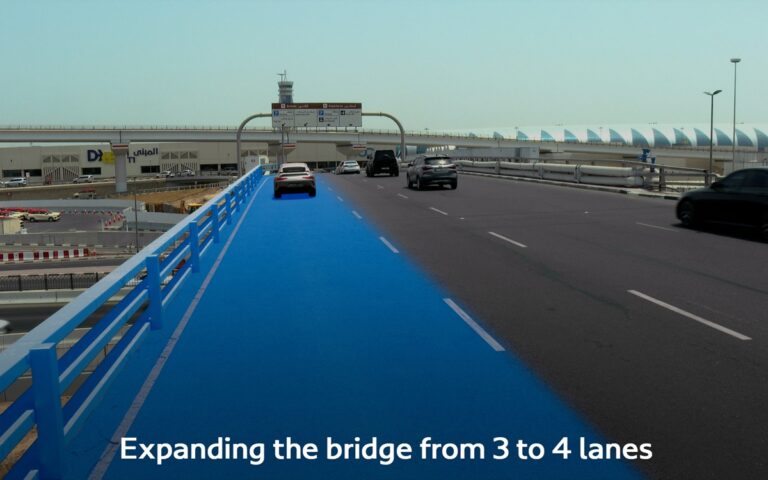The expansion is designed to ease congestion, reduce journey times, and improve customer experience, as passenger numbers at Dubai International Airport surpassed 92m in 2024.
Mattar Al Tayer, Director General and Chairman of the Board of Executive Directors of the RTA, said: “The project involves widening the existing bridge from three to four lanes by constructing a new bridge using an innovative system of steel box girders integrated with a composite concrete slab.
Dubai International Airport traffic
“This engineering solution was selected for its high structural efficiency, enabling delivery within a short timeframe, without the need for traffic diversions on Airport Street or temporary supports beneath the bridge, thereby ensuring uninterrupted traffic flow and the highest safety standards.
“The total length of the bridge, including its ramps, is 171m, with the main span extending nearly 70m. The project also includes road pavement improvements, upgrades to infrastructure services, and landscaping works to integrate with the surrounding infrastructure, in addition to new street lighting to enhance safety and visibility.
“The expansion will increase the bridge’s capacity from 4,200 to 5,600 vehicles per hour, a 33 per cent increase.”
Al Tayer reaffirmed RTA’s commitment to developing Dubai’s transport network: “The bridge expansion is part of RTA’s continuous efforts to improve traffic flow and strengthen connectivity between major corridors and vital facilities, most notably Dubai International Airport, the world’s busiest airport for international passengers.
“The expansion will boost street capacity, improve safety, and shorten journey times during peak hours.”
RTA has already implemented major upgrades along Airport Street, from its intersection with Sheikh Mohammed bin Zayed Road to Casablanca Street.
These included bridges and tunnels at Al Rashidiya, Casablanca Street, Marrakech Street, and Nad Al Hamar Street, alongside surface-level junction enhancements.
The programme also delivered a single-lane bridge for direct access to Terminal 3, another bridge to the Dubai Aviation Engineering Projects (DAEP) complex, and an additional bridge linking Airport Street to Casablanca Street without waiting at signals.
Further works provided an alternative route from Al Garhoud to Terminals 1 and 3, and expanded Casablanca Street from three to four lanes toward Al Garhoud Bridge.
By widening the Terminal 1 bridge and expanding road capacity, RTA aims to future-proof access to Dubai International Airport, strengthen connectivity across the emirate, and enhance Dubai’s position as a global hub for travel, business, and international events.

